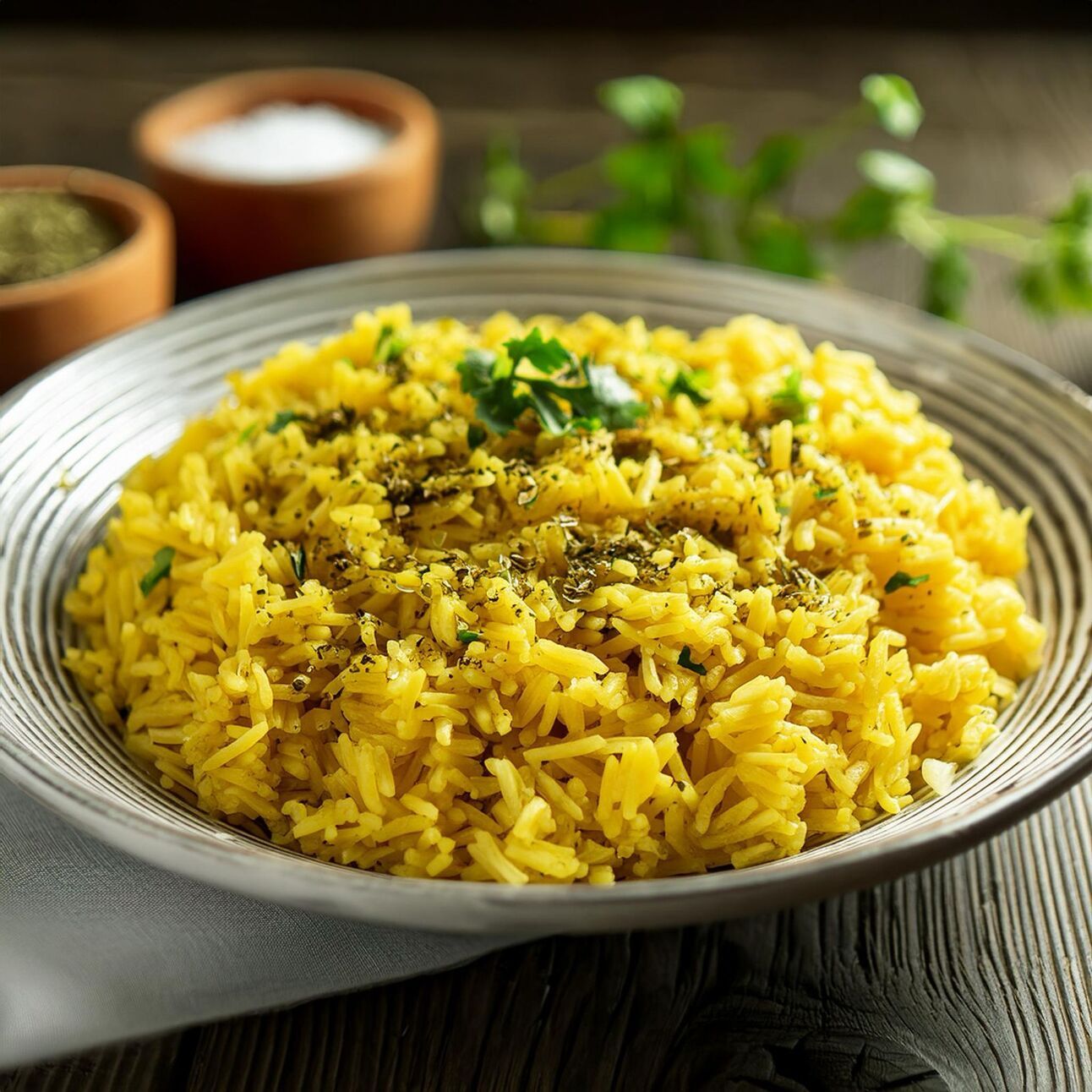❝We don’t stop laughing because we grow old; we grow old because we stop laughing❞
In A Rush?
Today’s 30-Second Summary
If you don’t have time to read the whole email today, here are some key takeaways:
Bell peppers punch above their weight when it comes to healthful phytochemicals, but which ones are best?
Today’s main feature examines the strengths of each one in turn—all the more reason to “eat the rainbow”, or at least the traffic lights in this case!
If you've wanted to enjoy cannabis but have been put off by the harshness of smoking or vaping, you're not alone.
Today’s sponsor Mood are offering federally-legal rapid-onset THC gummies that can have you “feeling right” in just 5 minutes
Today’s featured recipe is a great staple to always be able to whip up to accompany (almost) any meal. Healthy fiber, glycemic index of zero, and a cocktail of beneficial phytochemicals… Not to mention, it’s delicious enough to seriously change your expectations for rice!
Read on to learn more about these things, or click here to visit our archive
A Word To The Wise
Watch and Learn
25 Healthy Habits That Can Change Your Life
…if you implement them!
Prefer text? The above video will take you to a 10almonds page with a text-overview, as well as the video!
Saturday’s Life Hacks
Bell Peppers: A Spectrum Of Specialties
We were going to do this as part of our ongoing “This Or That?” challenge, but as there are four main types all with many different benefits, we thought bunch of fruits deserved a main feature.
And yes, they’re botanically fruits, even if culinarily used as vegetables—much like tomatoes, famously!
They’re all the same (but also very much not)
A thing to know is that whether bell peppers be green, yellow, orange, or red, they’re all the same plant, Capiscum anuum. All that differs is how early or late they’re harvested.
Notwithstanding the “Capiscum” genus, they don’t contain capsaicin (as is found in hot peppers). Capsaicin’s a wonderful phytochemical:
…but today we’re all about the bell peppers.
So, let’s see how they stack up!
💚 Green for lutein
Lutein is especially important for the eyes and [the rest of the] brain, to the point that there’s now an Alzheimer’s test that measures lutein concentration in the eye:
Green peppers have most of this important carotenoid, though the others all have some too. See also:
💛 Yellow for vitamin C
Yellow peppers are technically highest in vitamin C, but all of them contain far more than the daily dose per fruit already, so if there’s any color of pepper that’s nutritionally the most expendable, it’s yellow, since any other color pepper can take its place.
Watch out, though! Cooking destroys vitamin C, so if you want to get your Cs in, you’re going to want to do it raw.
🧡 Orange for zeaxanthin and cryptoxanthins
Similar in their benefits to lutein, these antioxidant carotenoids are found most generously in orange peppers (20x as much as in yellow, 10x as much as in red, and slightly more than in green).
❤️ Red for vitamins A & B6
Red peppers are richest by far in vitamin A, with one fruit giving the daily dose already. The others have about 10% of that, give or take.
Red peppers also have the most vitamin B6, though the others also have nearly as much.
❤️ Red for lycopene
We must do a main feature for lycopene sometime, as unlike a lot of antioxidant carotenoids, lycopene is found in comparatively very few foods (most famously it’s present in tomatoes).
Red is the only color of pepper to have lycopene.
10almonds tip: to get the most out of your lycopene, cook these ones!
Lycopene becomes 4x more bioavailable when cooked:
Lycopene in tomatoes: chemical and physical properties affected by food processing ← this paper is about tomatoes but lycopene is lycopene and this applies to the lycopene in red peppers, too
And the overall winner is…
You! Because you get to eat all four of them 😉
Enjoy!
Our Sponsors Make This Publication Possible
These cannabis gummies keep selling out in 2023
If you've ever struggled to enjoy cannabis due to the harshness of smoking or vaping, you're not alone. That’s why these new cannabis gummies caught our eye.
Mood is an online dispensary that has invented a “joint within a gummy” that’s extremely potent yet federally-legal. Their gummies are formulated to tap into the human body’s endocannabinoid system.
Although this system was discovered in the 1990’s, farmers and scientists at Mood were among the first to figure out how to tap into it with cannabis gummies. Just 1 of their rapid onset THC gummies can get you feeling right within 5 minutes!
Please do visit our sponsors—they help keep 10almonds free
You May Have Missed
Are GMOs Good Or Bad For Us?
Heart Attack: His & Hers (Be Prepared!)
How to Prevent Dementia: An Expert’s Guide to Long-Term Brain Health (book)
This Or That?
Vote on Which is Healthier
Yesterday we asked you to choose between apple cider vinegar and apple cider vinegar gummies—we picked the apple cider vinegar (click here to read about why), as did 95% of you!
Now for today’s choice:
Click on whichever you think is better for you!
Bonus (Sponsored) Recommendation
Discover unparalleled speech clarity with this advanced, state-of-the-art hearing aid. With crystal-clear sound delivered to your ears and a sleek, discreet design powered by German technology, you can now enjoy clear speech with minimum background distractions, even in the noisiest environments. Take comfort in their commitment to your hearing and try their 45-day no-risk trial today!
Recipes Worth Sharing
Tasty Versatile Rice
This one’s a great staple to always be able to whip up to accompany (almost) any meal. Healthy fiber, glycemic index of zero, and a cocktail of beneficial phytochemicals… Not to mention, it’s delicious enough to seriously change your expectations for rice!
Click below for our full recipe, and learn its secrets:
One-Minute Book Review
The Humor Habit: Rewire Your Brain to Stress Less, Laugh More, and Achieve More'er – by Paul Osincup
Ask not for whom the bell tolls... It could be tolling for anyone. Don't worry about it. It's probably fine.
More seriously (heh), laughter is good for healthy lifespan, also called healthspan. It eases stress and anxiety, gives our brains neurochemicals they need to function well, and is very pro-social too, which in turn has knock-on positive effects for our own mental health as well as those around us.
This book is a guide to cultivating that humor, finding the funny side in difficult times, and bringing a light-hearted silliness to moments where it helps.
The title suggests it's about habit-building (and it is!) but it's also about knowing where to look in your daily life for humorous potential and how to find it, and how to bring that into being in the moment.
The style is that of an instruction manual with a healthy dose of pop-science; first and foremost this is a practical guide, not a several-hundred page exhortation on "find things funny!", but rather a "hey, psst, here are many sneaky insider tricks for finding the funny".
Bottom line: this book is not only a very enjoyable read, but also very much the gift that keeps on giving, so treat yourself!
Penny For Your Thoughts?
What did you think of today's newsletter?
Wishing you a wonderfully restorative weekend,
The 10almonds Team









